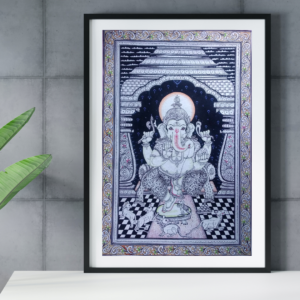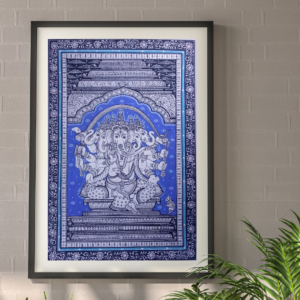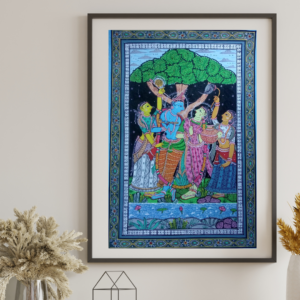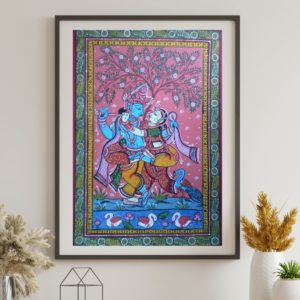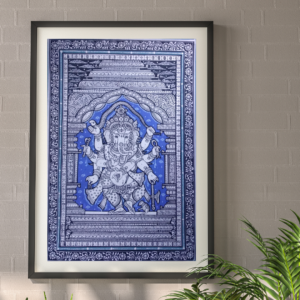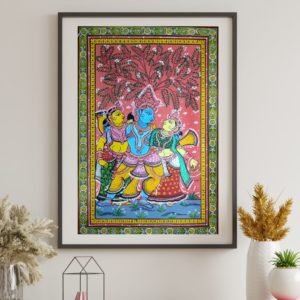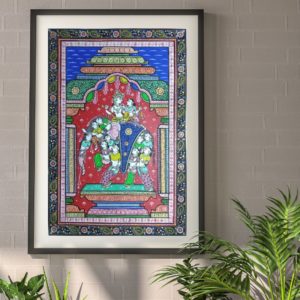In the rich tapestry of Hinduism, the worship of deities takes on various forms and manifestations. With each holding a unique significance and symbolism. One of the most iconic and widely revered symbols of Lord Shiva is the Shiva Linga. Devotees have venerated this sacred representation for millennia. And its worship holds a profound spiritual and cultural significance in the Hindu tradition. In this article, we shall delve into the reasons Why Shiva Linga is Worshiped. Exploring the historical, philosophical, and spiritual aspects that make it an integral part of Hindu religious practices.
Historical Origins
The worship of the Shiva Linga dates back to ancient times. With references found in ancient Vedic texts, such as the Rigveda and Yajurveda. The term “Linga” is derived from the Sanskrit word “lingam,” which means “mark” or “symbol.” The Shiva Linga is often described as a cylindrical or elliptical stone, symbolizing the divine formless aspect of Lord Shiva. The earliest historical evidence of the Shiva Linga worship can be traced to the Indus Valley Civilization. Where archaeological findings suggest the presence of linga-like objects.
The symbolism of the Shiva Linga
The Shiva Linga is laden with profound symbolism, representing the unmanifest and formless nature of the Divine. Its shape signifies the eternity and cosmic nature of the universe. Wherein creation, preservation, and dissolution occur cyclically. The round base of the Linga represents “Brahma,” the creator, the middle part represents “Vishnu,” the preserver, and the top part, called the “Purna Kalasha,” represents “Shiva,” the ultimate destroyer or transformer.
Moreover, Lord Shiva often associates the Shiva Linga with the cosmic pillar or “Stambha,” which he manifested to showcase his supremacy over other gods. As a symbol of stability, it serves as a reminder that Lord Shiva is the eternal support for the entire universe.
Why Shravan Month is Celebrated for Lord Shiva
Philosophical Significance
The worship of the Shiva Linga holds deep philosophical significance. It represents the union of the masculine and feminine principles – “Shiva” and “Shakti.” Shiva symbolizes pure consciousness. While Shakti represents the divine cosmic energy that brings forth creation. This union embodies the concept of “Ardhanarishvara,” symbolizing the inseparable oneness of the male and female energies in the universe.
Furthermore, the Shiva Linga serves as a focal point for meditation and contemplation. It encourages devotees to look beyond the physical form and perceive the underlying essence of existence. Reinforcing the idea that the ultimate reality is formless and eternal.
Energy and Spiritual Power
According to Hindu beliefs, the Shiva Linga is not merely an inanimate object but a reservoir of cosmic energy and spiritual power. The devotees believe that it acts as a channel to connect with the divine and receive blessings from Lord Shiva. Believers believe that through sincere devotion and worship. One can attain spiritual awakening and liberation (Moksha) from the cycle of birth and death (Samsara).
Devotees often anoint the Shiva Linga with water, milk, honey, or other sacred substances as offerings. Believers believe that these rituals purify the mind and elevate the soul. Fostering a sense of spiritual purity and inner transformation.
Why Nandi is Outside Shiva Temple
Various Forms of Shiva Linga
It is essential to note that the Shiva Linga can take on various forms beyond the traditional stone representation. For instance, the “Spatika Lingam” is made of clear quartz and is believed to enhance spiritual awareness and healing properties. The “Banalinga” is made of black stone and is often found in riverbeds. While the “Parad Lingam” is made of mercury and holds great significance in tantric practices.
Sacred Sites and Rituals
Throughout India, people dedicate numerous temples to worship Lord Shiva in the form of the Shiva Linga. Prominent among them are the Kedarnath Temple in Uttarakhand, the Mahakaleshwar Temple in Madhya Pradesh, and the Annamalaiyar Temple in Tamil Nadu. These sites serve as major pilgrimage destinations for devotees seeking spiritual solace and blessings from the Divine.
During Shiva Linga worship, devotees partake in various rituals, such as Rudrabhishekam, wherein they bathe the Linga with milk, water, ghee, honey, and other auspicious liquids. The chanting of sacred mantras and hymns adds to the sanctity of the worship, creating an atmosphere of profound devotion and reverence.
Why Shiva Has Moon on His Head
Cultural and Societal Impact
The worship of the Shiva Linga not only holds spiritual significance but also plays a vital role in the cultural and societal fabric of India. The symbolism of the Linga emphasizes the notion of equality and unity among all beings, transcending caste, creed, and gender barriers. It promotes the idea of self-realization and the path of righteousness, encouraging individuals to live a life of virtue and compassion.
Source of Divine Knowledge and Wisdom
Devotees also regard the Shiva Linga as a source of divine knowledge and wisdom. Devotees often see Lord Shiva, the deity represented by the Linga, as the embodiment of the yogi, the supreme ascetic, and the quintessential Guru (teacher). By worshipping the Linga with a sincere heart and mind, devotees seek spiritual guidance and seek to awaken their inner wisdom and intuition. Believers hold that regular meditation and offerings to the Shiva Linga can lead to an increase in clarity of thought, enhancement of intellectual abilities, and a deeper understanding of life’s mysteries.
Why Did Lord Shiva Drink Poison?
Absorption of Negative Energies
In Hindu tradition, devotees know Lord Shiva as the “Mahadeva” or “Great God” who actively absorbs and transmutes negative energies. Devotees consider the Shiva Linga a powerful energy center capable of attracting and neutralizing malevolent forces. Devotees believe that by worshipping the Linga and offering prayers with utmost devotion, they can seek protection from evil influences and dispel negative energies from their surroundings.
Representation of Cycles of Time
The Shiva Linga closely associates with the concept of time and the cyclical nature of existence. As the ultimate destroyer, Lord Shiva is responsible for the dissolution and transformation of the universe at the end of each cosmic cycle. The Shiva Linga, with its rounded shape, represents the wheel of time, which continuously turns and brings forth various phases of creation, preservation, and destruction. This symbolism serves as a reminder of the impermanence of the material world and the eternal nature of the soul.
Why Lord Shiva is Called Mahadev
Healing and Well-being
Shiva Linga worship also associates with healing and well-being. Devotees believe that the Linga radiates divine energies with therapeutic effects on both the physical and mental levels. Devotees often perform Rudrabhishekam or Abhishekam rituals with various sacred substances, as the water or liquid used during the ritual becomes charged with positive energy. Believers hold that consuming or applying this energized water promotes good health, dispels illnesses, and brings overall prosperity.
Unity with the Divine
The Shiva Linga worship fosters a deep sense of unity and oneness with the Divine. Devotees perceive the Linga as a representation of their own innermost self, and the act of worship becomes a means of self-realization and spiritual transformation. The process of offering oneself to Lord Shiva through the Linga signifies surrendering the ego and merging with the universal consciousness. This profound experience of unity with the Divine brings immense joy, inner peace, and a sense of purpose in life.
Conclusion
The worship of the Shiva Linga holds a multi-dimensional significance in Hinduism. It carries profound philosophical meaning, representing the formless nature of the Divine and the inseparable union of masculine and feminine energies. The Shiva Linga serves as a potent medium for spiritual practice and self-realization, enabling devotees to connect with the cosmic energies and seek the blessings of Lord Shiva.
As a cultural and societal symbol, the Shiva Linga fosters inclusivity and harmony, transcending the boundaries that divide humanity. With its rich historical origins, deep symbolism, and spiritual significance, the worship of the Shiva Linga continues to be an integral part of Hindu religious practices, evoking devotion and reverence in the hearts of millions around the world.
If you liked this post, check out some of our related posts too!
Enigmatic Hue: Why is Krishna Blue?




